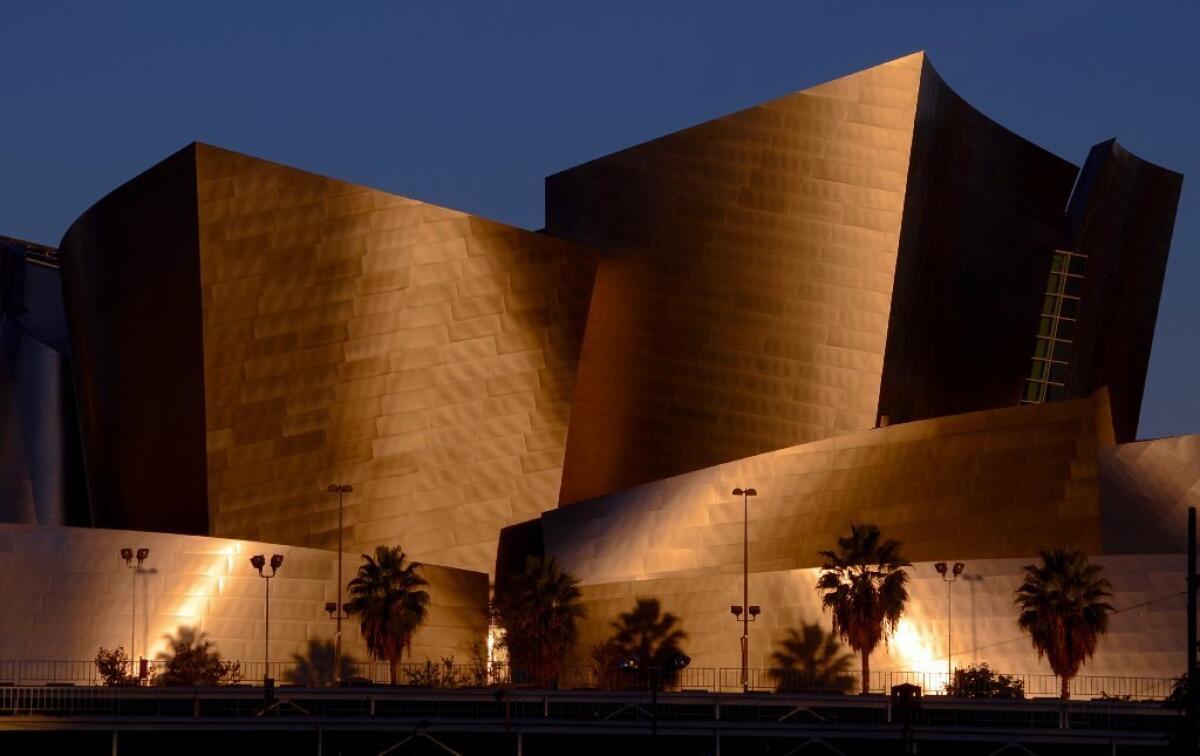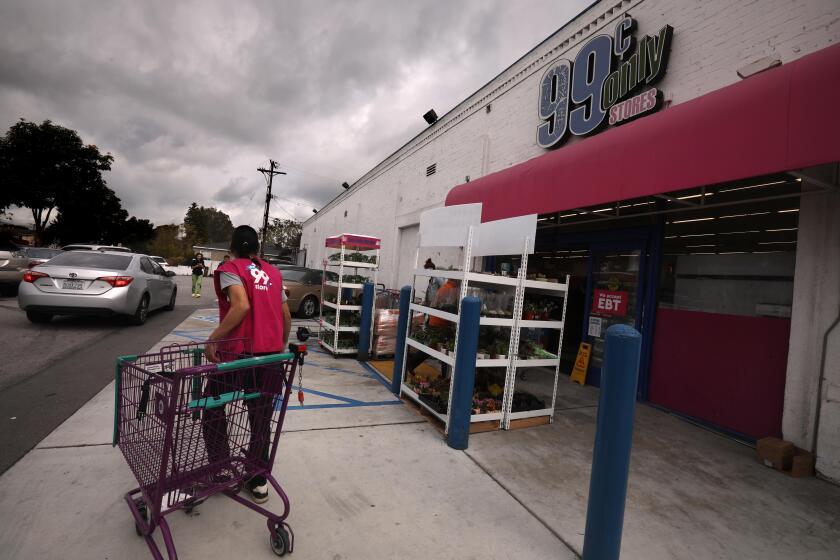Opinion: Can beautiful architecture inspire Americans to become good citizens?

A hundred and some years ago, an aesthetic force called the City Beautiful movement professed the theory that grand public buildings, lovely civic palaces, could inspire Americans to become good citizens.
It may be no coincidence that at the same time, many Americans were new immigrants, fledgling citizens, and I suspect that the inspiration had as much to do with the powerful, authoritative message in the look of the buildings as it had to do with lovely mosaics, murals, marble, glass and brass.
The movement was discredited and even regarded in some quarters as cultish, but I think there’s something to the City Beautiful idea when it comes to civic pride. Los Angeles’ signature City Hall is as handsome-looking outside as it is inside, and if you haven’t seen the inside, you owe it to yourself to do so. City Hall, the nearby just-restored Hall of Justice, Union Station — these are buildings that signal to the people who walk in the doors or see them from afar that great, important, even solemn matters are transacted here.
Chicago and its Columbian Exposition of 1893 were at the beating heart of the City Beautiful. Washington, D.C., is another exemplar, even though many of the edifices at its marble heart predate the movement and can be a little austere in their grandeur.
Since the 1960s, though, it seems as if great civic architecture has become an embarrassment. Politicians who love to cut ribbons find it hard to justify paying for beautiful on top of functional. The result is a style I call Sunbelt Stalinism: drab, haggard buildings that could fit right into malls. They don’t wear well because they don’t even start well, and they sure don’t inspire anyone to grand civic thinking.
I brought this up with Frank Gehry, who is a great admirer of L.A.’s City Hall. When Bilbao, Spain, enlisted him to build the Guggenheim Museum there, the organizers told him that they weren’t just after a museum. They wanted it to help save Bilbao’s image.
“They said, ‘Mr. Gehry, we’re losing people, we’re losing industry, we’re losing commerce. We’ve got to turn it around, and we believe architecture can do it.’ I looked at the guy and said, ‘Are you out of your mind? Miracles are not that easy.’ With a lot of help from them, we pulled it off.”
And how. The Guggenheim Museum Bilbao opened in 1997 and put that city on the tourist map. And the tourists brought their euros with them. Bilbainos, and the world, began to think better of Bilbao. There’s even a name for it — the Bilbao Effect, or sometimes the Guggenheim Effect. Whether it is more the exception than the rule that “starchitecture” can have such an effect is energetically debated, along with how to keep it all going.
The Financial Times said Bilbao’s economic renaissance had been “so dramatic that it has become a case study for the regeneration of other centres struggling with dying industries and inner-city blight.”
Even the City Beautiful adherents didn’t have such massive expectations, but their hopes certainly had merit.
The newest public building going up in these parts will be a federal courthouse at the southwest corner of 1st Street and Broadway, across from the Los Angeles Times and catty-corner from the now-leveled lot where the 1931 California State Building once stood. It was demolished after the Sylmar earthquake, and from time to time, my colleagues and I would drag a croquet set across the street to play on the flattened mound of dirt that remained.
The new courthouse is being built on the leveled dregs of yet another state office building, which opened in 1960. It was a ghastly, anonymizing structure that really epitomized Sunbelt Stalinism, and I wasn’t sorry to see it taken down years and years ago. Nothing stood there for a very long and very welcome time; downtown needed the open space.
Now the hard hats and the machines are there day and night erecting a glass-sided “floating cube” design that seems to aspire to imposing, if not exactly City Beautiful. But will it be transformative? I will withhold judgment until I see it, even though it will block our once-fine view of Gehry’s Disney Concert Hall shining on the hill.
Follow Patt Morrison on Twitter @pattmlatimes
More to Read
A cure for the common opinion
Get thought-provoking perspectives with our weekly newsletter.
You may occasionally receive promotional content from the Los Angeles Times.







